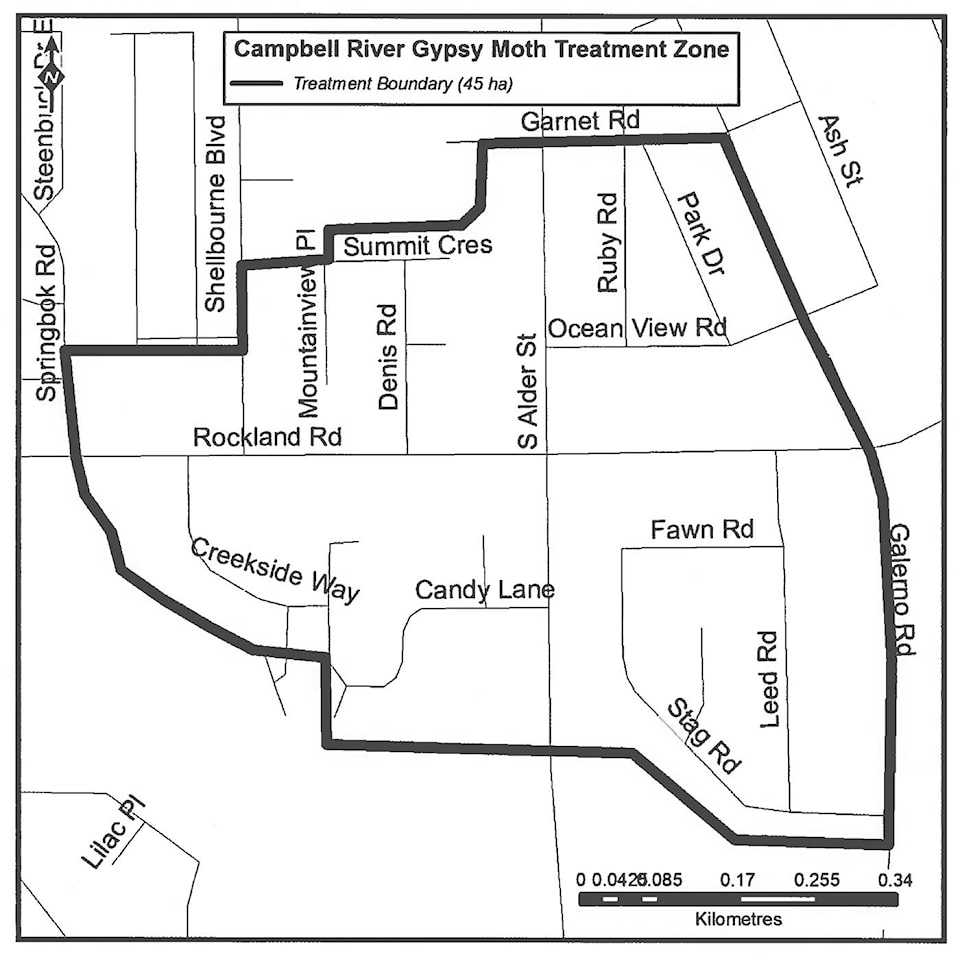Residents within a few blocks of the Rockland Road and S. Alder Street intersection of Campbell River can expect to be seeing people walking through their yards spraying insecticide at some point this spring.
City council received notice from the provincial government at their last meeting that the area is on the Ministry of Forests, Lands, Natural Resources and Rural Development’s list of gypsy moth spraying sites for 2018, with proposed treatments to occur over a three-week period in late April or early May. Campbell River is one of four communities on this year’s treatment list, which also includes North Surrey, Agassiz and Courtenay.
The invasive European gypsy moth was first seen in B.C. in 1978, and, so far, it has failed to gain a solid footing here.
Which is a good thing.
“Once gypsy moths arrive in an area, they threaten extensive damage to the environment and economy,” the ministry says. “B.C.’s major trading partners may set quarantine and trade restrictions and restrict transportation for products like Christmas trees and logs with bark. For example, in 1999, in response to a gypsy moth infestation, the U.S. threatened to refuse shipments from B.C. nurseries without additional inspection certificates.”
The insecticide used to treat for gypsy moths, Bacillus thuringuenisis kurstaki (Btk) is a naturally-occuring bacteria that “has no toxic effects on humans, other mammals, birds, fish or honeybees or other beneficial insects,” the government says, though it does caution that those with respiratory ailments or other health concerns, “may wish to reduce their exposure to the product during the spray operation.”
The government has two means of spraying Btk: aerial spraying and ground spraying. The Campbell River treatment will be done from the ground as the area is relatively small and some of the area being sprayed – the area around Simms Creek – is covered by forest canopy that gets in the way during aerial spraying.
The disadvantage of ground spraying is that while sprayers can target potential host vegetation without treating other objects, such as houses, the ministry says, it “is often intrusive, as it requires entry onto private land, and trucks and sprayers are set up in the streets for several days.”
Ground spraying is also a much slower and more labour intensive process. The area being treated in Campbell River will need to be treated three times, 10-days apart by ground crews sweeping through the area.
Coun. Charlie Cornfield, upon receipt of the letter from the ministry, asked how they intend on telling those affected by the spraying that this is coming.
“One of the things I was looking for (in the ministry’s notice) was a communications strategy around engagement with our residents,” Cornfield said. “As soon as you start getting around houses and residences, it becomes a sensitive issue and while I think it’s important that we deal with the gypsy moth issue, the proper way to do that is by engaging the community.”
And so a letter will be sent to the ministry by the city to ask for clarification on how – or if – that communication will happen before the spraying takes place.
The area for proposed treatment is bounded to the north at Garnet Road, to the west at Springbok Road, to the south just south of Candy Lane and Stag Road and to the east at Galerno Road.
